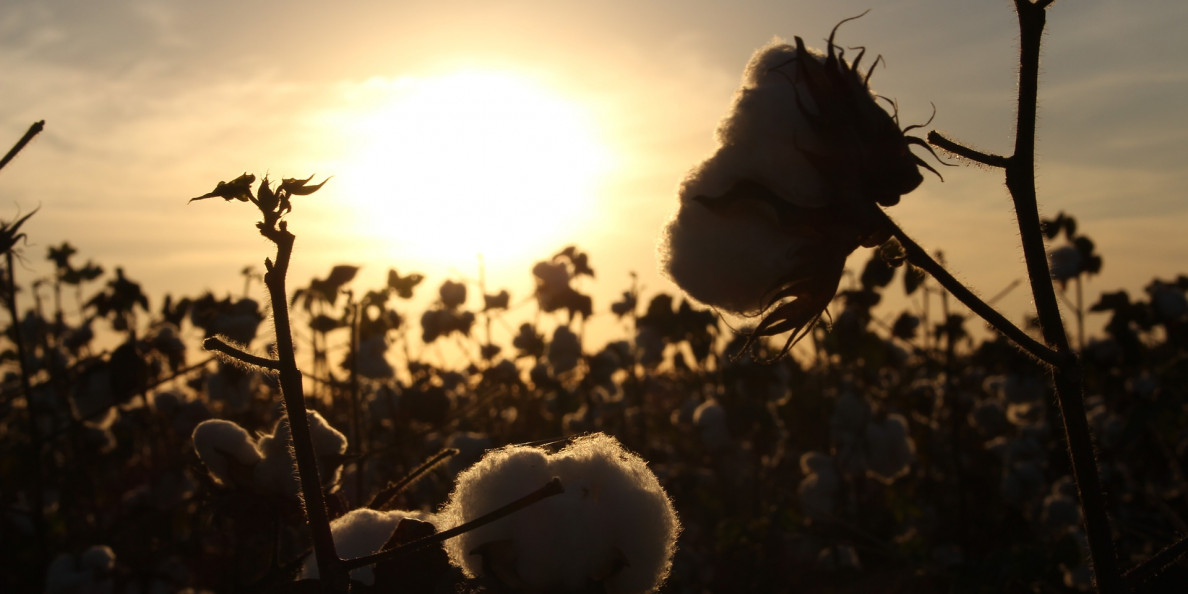By Beck Barnes
Brothers Mead and Marshall Hardwick have traveled the globe evangelizing for American cotton production in the past. Through their work with cotton advocacy associations, they have helped spread the good message of American cotton farming.
But they’d likely never had to speak in front of a group quite like the one at their hunting camp near their farming operation near Newellton, LA, in late September. A delegation of roughly 40 fashion industry representatives – some designers, others worked in sourcing materials – were sharply dressed and taking meticulous notes as the brothers described Hardwick Planting Company to them. The crowd represented fashion brands like Gap, Lands’ End and JCPenney, and many had traveled from places like San Francisco and Brooklyn to be on the farm tour.
“As a whole, the (American cotton) industry has several large objectives – one is to be the world leader for sustainable cotton production, and also be the supplier of choice for companies who want to source sustainably grown cotton,” Mead began. “And also, we want to make a difference, to drive change and make our farms and environment a better place.”
The Hardwick brothers illustrated how that message plays out on their 20,000 acres of Louisiana Delta farmland. Sustainability was the overarching theme of the tour, part of a three-day event hosted by BASF’s e3 program. As e3 cotton producers, the Hardwicks demonstrated how they incorporate the program’s core tenants – being socially equitable, economically viable and environmentally sound.
“From the mid-80s to 2016, we’ve had a reduction of land use,” Marshall explained to the group, as a slideshow illustrated his speech. “A bale of cotton requires 31% less land to produce that same amount of cotton in that timeframe. Our water use has gone down 82% in that same timeframe.”
Eventually the presentations ended, and the fashion industry representatives hopped back on the BASF tour bus, traveling Highway 425 through Tensas Parish, making stops at a cotton field, a gin and a cotton warehouse along their way.
“Some of these people have never been on a farm before,” said Robert Antoshak, managing director of Olah Incorporated. “That’s intentional. There are a lot of designers in the mix here. There are sourcing people. There are great big store chains, and also really small specialty stores. And we mix them in intentionally so that we hit a really wide audience of influencers and people who make a difference.”
As a consultant to BASF, Antoshak advises the company on how to best reach this type of group – folks who are near the retail shelf at the end of cotton’s supply chain. The idea, he says, is to increase cotton demand by showcasing cotton farmers and ginners – specifically those who are e3 cotton growers – as they produce the crop in a sustainable way.
Getting With the Program
There has been no shortage of talk surrounding sustainability in agriculture over recent years. Through the e3 program, BASF has gone about the pragmatic work of documenting cotton producers’ sustainable gains, utilizing traceability to highlight those advancements, and finally, showcasing those results to decision makers at the retail level.
“This program establishes a metric of measurements where any buyer of e3 cotton can look and see what type of inputs were used by farmers on a field-by-field basis across the United States,” Antoshak says. “(Retailers) want to have a standard they can believe in and that is traceable to the source. So if we can provide that to them, that’s really worth a lot to these brands, because consumers today are asking for that.
“The whole thing is designed to bring value back to the farmers,” Antoshak says. “So… the more partners we partner with – specifically with mills – it represents a new fundamental model that brands can really latch onto. And that gives our U.S. growers a distinct advantage in the marketplace through increased demand and hopefully helps with prices.”
Mill Supplied
The tour ended at Vidalia Mills, a brand-new denim mill that will begin operations in fall 2019 in the small town of Vidalia, LA. In addition to adding 600 jobs to the rural economy there, the mill has sights on sourcing 100% American grown BASF e3 cotton.
From a carbon footprint standpoint, being able to mill cotton into denim in Louisiana is a much more sustainable alternative to shipping raw cotton across the world to have that process done in China before it is shipped back to the United States. That was an aspect of the Vidalia Mill opening that everyone in the crowd was excited about.
“Getting to see, on this trip, from the farm to raw materials and then to fabrication before it goes on to the sewing aspect, which is basically my division, it was quite interesting,” said Dickson Yuen, who works in men’s denim design for JCPenney. Having never been on a farm before, Yuen said it was enlightening to see the industry from the cotton production end.


